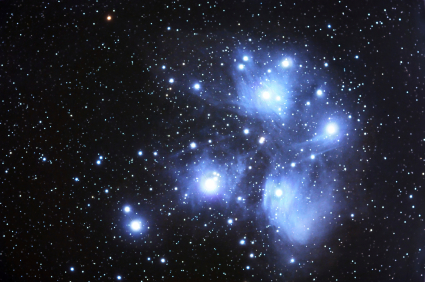Reflections on Mylar, Helium, and the Atmosphere, Part 3
 July 20, 2010
July 20, 2010 
The Mylar balloon I wrote about in my last two posts (July 13 & 15) descended to earth because it no longer was full of helium. All balloons have microscopic holes and imperfectly sealed entryways.
The atoms or molecules that make up a gas are constantly zipping this way and that, changing direction whenever they collide with one another or with the sides of a container, like scattering pool balls. And helium atoms are the second tiniest of all atoms, right after hydrogen. So it’s highly probable that in a matter of days, the majority of the helium atoms in a balloon will hit a hole, easily slip through it, and escape.
Meanwhile, air molecules, mostly nitrogen and oxygen, are bouncing against the balloon from the outside. Many of these may make their way into the balloon. In this way, air replaces some of the helium, though the overall pressure inside lessens.
But the result of this dynamic is that eventually all the helium, from all the helium balloons, escapes and disperses into the high levels of earth’s atmosphere. Meaning helium is not a renewable resource. So we have to keep finding more helium somewhere.
Right now, there’s plenty of helium on earth. But it’s expensive to isolate from air or from natural gas deposits. There is also helium on the moon that we might eventually exploit. (What a concept! And what an expensive concept!)
The place with the most helium in our solar system is the sun itself. All that solar radiation results from fusion, a nuclear reaction in which hydrogen nuclei fuse to form helium and give off a lot of energy in the process. This is the energy Einstein was talking about in his famous equation: E = mc2.
Our sun is one of the billions of stars in our Milky Way Galaxy. And there are billions of galaxies. So helium is abundant in the universe. From floating balloons to the myriad stars in the night sky: helium is part of the magic of the cosmos. Don't you agree?
 atmosphere
atmosphere 

Reader Comments